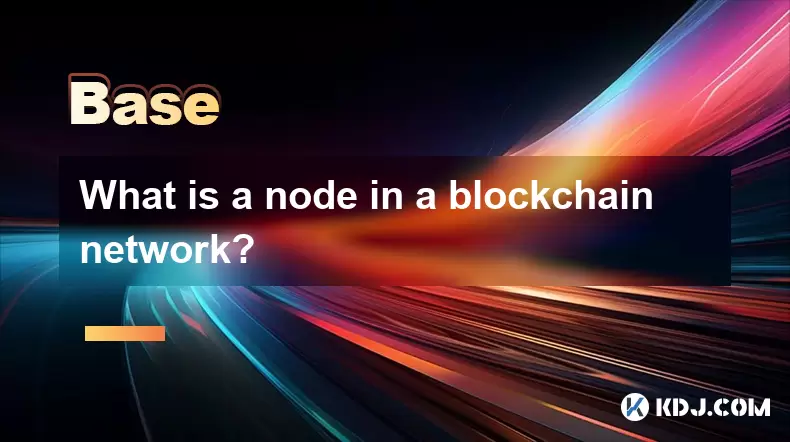-
 Bitcoin
Bitcoin $118400
0.39% -
 Ethereum
Ethereum $3814
2.17% -
 XRP
XRP $3.547
1.34% -
 Tether USDt
Tether USDt $1.000
0.00% -
 BNB
BNB $769.5
2.95% -
 Solana
Solana $191.7
6.36% -
 USDC
USDC $0.9999
0.01% -
 Dogecoin
Dogecoin $0.2722
7.75% -
 Cardano
Cardano $0.8995
5.59% -
 TRON
TRON $0.3158
-0.78% -
 Hyperliquid
Hyperliquid $47.37
4.46% -
 Stellar
Stellar $0.4848
3.54% -
 Sui
Sui $4.031
1.72% -
 Chainlink
Chainlink $20.11
3.94% -
 Hedera
Hedera $0.2832
3.16% -
 Avalanche
Avalanche $26.20
4.27% -
 Bitcoin Cash
Bitcoin Cash $530.5
0.67% -
 Shiba Inu
Shiba Inu $0.00001568
3.59% -
 Litecoin
Litecoin $118.4
1.42% -
 UNUS SED LEO
UNUS SED LEO $8.976
-0.23% -
 Toncoin
Toncoin $3.349
2.54% -
 Polkadot
Polkadot $4.590
2.54% -
 Uniswap
Uniswap $10.56
-0.59% -
 Ethena USDe
Ethena USDe $1.001
0.00% -
 Monero
Monero $327.7
0.39% -
 Pepe
Pepe $0.00001422
2.62% -
 Bitget Token
Bitget Token $4.973
-1.22% -
 Dai
Dai $1.000
0.02% -
 Aave
Aave $331.9
1.59% -
 Bittensor
Bittensor $429.6
-0.56%
What is a node in a blockchain network?
A node in blockchain is a device that validates transactions, stores data, and supports decentralization by maintaining a copy of the ledger.
Jul 21, 2025 at 10:28 am

Understanding the Role of a Node in Blockchain
In the realm of blockchain technology, a node is a fundamental component that supports the decentralized structure of the network. Each node is essentially a device—like a computer or server—connected to the blockchain network that participates in validating and storing data. Unlike traditional centralized systems, where a single authority manages data, blockchain relies on a distributed network of nodes to maintain integrity and transparency.
Nodes play a crucial role in ensuring that no single entity has control over the entire blockchain. Every node contains a copy of the entire blockchain ledger, which allows for transparency and redundancy. When a new transaction or block is added to the chain, it must be verified by multiple nodes before it becomes part of the official record. This consensus mechanism is what makes blockchain secure and resistant to tampering.
Types of Nodes in Blockchain Networks
Not all nodes serve the same function, and their roles can vary depending on the specific blockchain protocol. The most common types include full nodes, light nodes, and mining nodes.
- Full nodes are responsible for validating transactions and blocks independently. They store the entire history of the blockchain and enforce the rules of the network.
- Light nodes, or lightweight nodes, do not store the full blockchain. Instead, they rely on full nodes to provide necessary data, making them faster and less resource-intensive.
- Mining nodes, also known as miner nodes, are involved in the process of creating new blocks through mining. These nodes compete to solve complex cryptographic puzzles and are rewarded for their efforts.
Each type of node contributes differently to the overall health and efficiency of the blockchain network. Understanding these distinctions helps users choose the right node type based on their technical capabilities and goals.
How Nodes Validate Transactions
The validation process is a core function of nodes, especially full nodes. When a transaction is initiated, it is broadcast to the network and picked up by nodes. These nodes then check the transaction against the network’s rules, such as verifying digital signatures and ensuring that the sender has sufficient funds.
If the transaction meets all criteria, it is added to a pool of pending transactions. Miners or validators then select transactions from this pool to include in a new block. Once a block is mined or validated, it is propagated across the network, and nodes verify the block’s integrity before accepting it into their copy of the blockchain.
This multi-step validation process ensures that only legitimate transactions are recorded, preventing fraud and double-spending. It also reinforces the decentralized nature of blockchain by distributing trust among multiple nodes rather than relying on a central authority.
Running a Node: A Step-by-Step Guide
Setting up and running a node can be an engaging way to contribute to a blockchain network. Here’s a detailed guide to help you get started:
- Choose a blockchain platform: Decide which blockchain you want to support, such as Bitcoin, Ethereum, or a smaller altcoin.
- Download the appropriate software: Obtain the node software from the official website of the blockchain you selected.
- Prepare your hardware: Ensure your machine meets the minimum requirements, which can include disk space, RAM, and processing power.
- Install the software: Follow the installation instructions provided by the blockchain’s documentation.
- Configure settings: Adjust settings like network ports and synchronization options based on your preferences.
- Start the node: Launch the software and allow it to synchronize with the network. This may take several hours or even days depending on the blockchain size.
- Maintain the node: Regularly update the software and monitor performance to ensure smooth operation.
By running a node, you not only support the network but also gain a deeper understanding of how blockchain technology functions at a technical level.
Security and Decentralization Benefits of Nodes
The presence of numerous nodes in a blockchain network significantly enhances its security and decentralization. Since each node maintains a copy of the ledger, the network is resilient to attacks or failures. Even if some nodes go offline or are compromised, the rest of the network continues to operate unaffected.
Additionally, nodes prevent censorship by ensuring that no single entity can alter the blockchain without consensus. Any attempt to modify past transactions would require an attacker to control more than 50% of the network’s computing power, which is highly improbable in well-established blockchains.
Decentralization also promotes trust among users. Because there is no central point of failure, participants can interact directly without needing intermediaries. This trustless system is a cornerstone of blockchain technology and is made possible by the collective work of nodes.
Frequently Asked Questions
Q: Can running a node earn me cryptocurrency rewards?
A: Some blockchains offer incentives for running full nodes, particularly in Proof-of-Stake systems. However, not all networks provide financial rewards, and it often depends on the specific protocol and network participation level.
Q: Is it safe to run a node on a home network?
A: Running a node is generally safe, but you should ensure your firewall and network settings are configured correctly. It’s also advisable to keep your node software updated to prevent vulnerabilities.
Q: Do I need special hardware to run a node?
A: The requirements vary by blockchain. Bitcoin and Ethereum full nodes require significant storage and bandwidth, while some smaller networks have lower demands. Check the specific requirements for the blockchain you’re interested in.
Q: What happens if my node goes offline?
A: If your node disconnects temporarily, it will typically resynchronize with the network once it comes back online. However, frequent downtime may reduce its effectiveness in supporting the network.
Disclaimer:info@kdj.com
The information provided is not trading advice. kdj.com does not assume any responsibility for any investments made based on the information provided in this article. Cryptocurrencies are highly volatile and it is highly recommended that you invest with caution after thorough research!
If you believe that the content used on this website infringes your copyright, please contact us immediately (info@kdj.com) and we will delete it promptly.
- Bitcoin, Trump Media, and Acquisition: A New York Perspective
- 2025-07-22 06:30:12
- Venture Capital, Crypto Treasuries, and Ethena (ENA): A New York Perspective
- 2025-07-22 06:50:13
- Solana: Building a Decentralized Nasdaq with Block Assembly Marketplace?
- 2025-07-22 06:30:12
- Jito, BAM, and Solana MEV: A New Era for Blockspace?
- 2025-07-22 06:50:13
- Trump Media, Bitcoin, and Congress: A New Era of Crypto Politics?
- 2025-07-22 04:30:12
- Whales, Momentum, and SHIB: What's the Deal?
- 2025-07-22 05:10:13
Related knowledge

What is the difference between CeFi and DeFi?
Jul 22,2025 at 12:28am
Understanding CeFi and DeFiIn the world of cryptocurrency, CeFi (Centralized Finance) and DeFi (Decentralized Finance) represent two distinct financia...

What is the difference between a sidechain and a Layer 2?
Jul 20,2025 at 11:35pm
Understanding the Concept of SidechainsA sidechain is a separate blockchain that runs parallel to the main blockchain, typically the mainnet of a cryp...

What is the Inter-Blockchain Communication Protocol (IBC)?
Jul 19,2025 at 10:43am
Understanding the Inter-Blockchain Communication Protocol (IBC)The Inter-Blockchain Communication Protocol (IBC) is a cross-chain communication protoc...

How does sharding improve scalability?
Jul 20,2025 at 01:21am
Understanding Sharding in BlockchainSharding is a database partitioning technique that is increasingly being adopted in blockchain technology to enhan...

What is the "crypto trilemma" of scalability, security, and decentralization?
Jul 19,2025 at 06:28pm
Understanding the Concept of the Crypto TrilemmaThe crypto trilemma refers to the challenge of simultaneously achieving scalability, security, and dec...

What is a cliff and vesting schedule in tokenomics?
Jul 20,2025 at 10:28am
What Does a Cliff Mean in Tokenomics?In tokenomics, a cliff refers to a specific period during which token holders are not allowed to access or transf...

What is the difference between CeFi and DeFi?
Jul 22,2025 at 12:28am
Understanding CeFi and DeFiIn the world of cryptocurrency, CeFi (Centralized Finance) and DeFi (Decentralized Finance) represent two distinct financia...

What is the difference between a sidechain and a Layer 2?
Jul 20,2025 at 11:35pm
Understanding the Concept of SidechainsA sidechain is a separate blockchain that runs parallel to the main blockchain, typically the mainnet of a cryp...

What is the Inter-Blockchain Communication Protocol (IBC)?
Jul 19,2025 at 10:43am
Understanding the Inter-Blockchain Communication Protocol (IBC)The Inter-Blockchain Communication Protocol (IBC) is a cross-chain communication protoc...

How does sharding improve scalability?
Jul 20,2025 at 01:21am
Understanding Sharding in BlockchainSharding is a database partitioning technique that is increasingly being adopted in blockchain technology to enhan...

What is the "crypto trilemma" of scalability, security, and decentralization?
Jul 19,2025 at 06:28pm
Understanding the Concept of the Crypto TrilemmaThe crypto trilemma refers to the challenge of simultaneously achieving scalability, security, and dec...

What is a cliff and vesting schedule in tokenomics?
Jul 20,2025 at 10:28am
What Does a Cliff Mean in Tokenomics?In tokenomics, a cliff refers to a specific period during which token holders are not allowed to access or transf...
See all articles

























































































